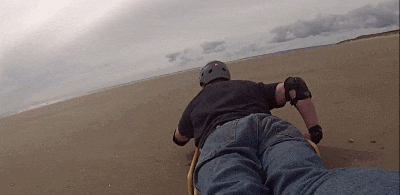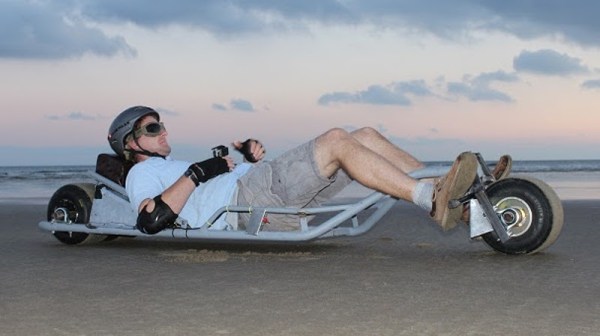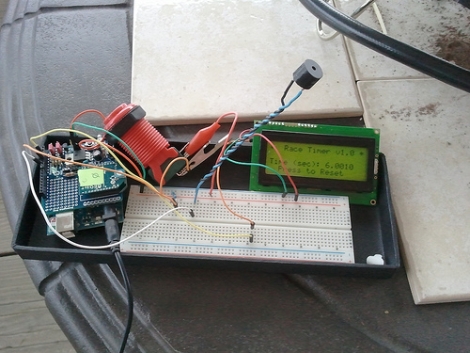[John Dingley] describes his Electric Beach Luge Project as an exciting mashup between “a downhill luge board, a kite surf buggy, a go-kart, and a Star Wars Land Speeder” and it’s fresh from a successful test run. What’s not to like? The DIY experimental vehicle was made to run on long, flat, firm stretches of sand while keeping the rider as close to the ground as possible. The Beach Luge is mainly intended to be ridden while lying on one’s back, luge-style, but it’s also possible to lay prone in the “Superman” position.

The whole unit was built from the ground up, but [John] points out that the design isn’t particularly complicated. There is no fancy self-balancing or suspension involved and steering is simple. A tube bender and a welder took care of making the frame. The rest is mainly used go-kart parts obtained cheaply from eBay, driven by a 500W 24V electric motor from an old Golf Kart. Like a luge sled, the goal is for the vehicle itself to interfere as little as possible between the user and the earth to make the experience as visceral as it can be.
You can see it in action in the two videos embedded below, but even more videos and some great pictures are available on the project’s page. [John] says it’s great fun to ride, but feels it could use twice as much power!













